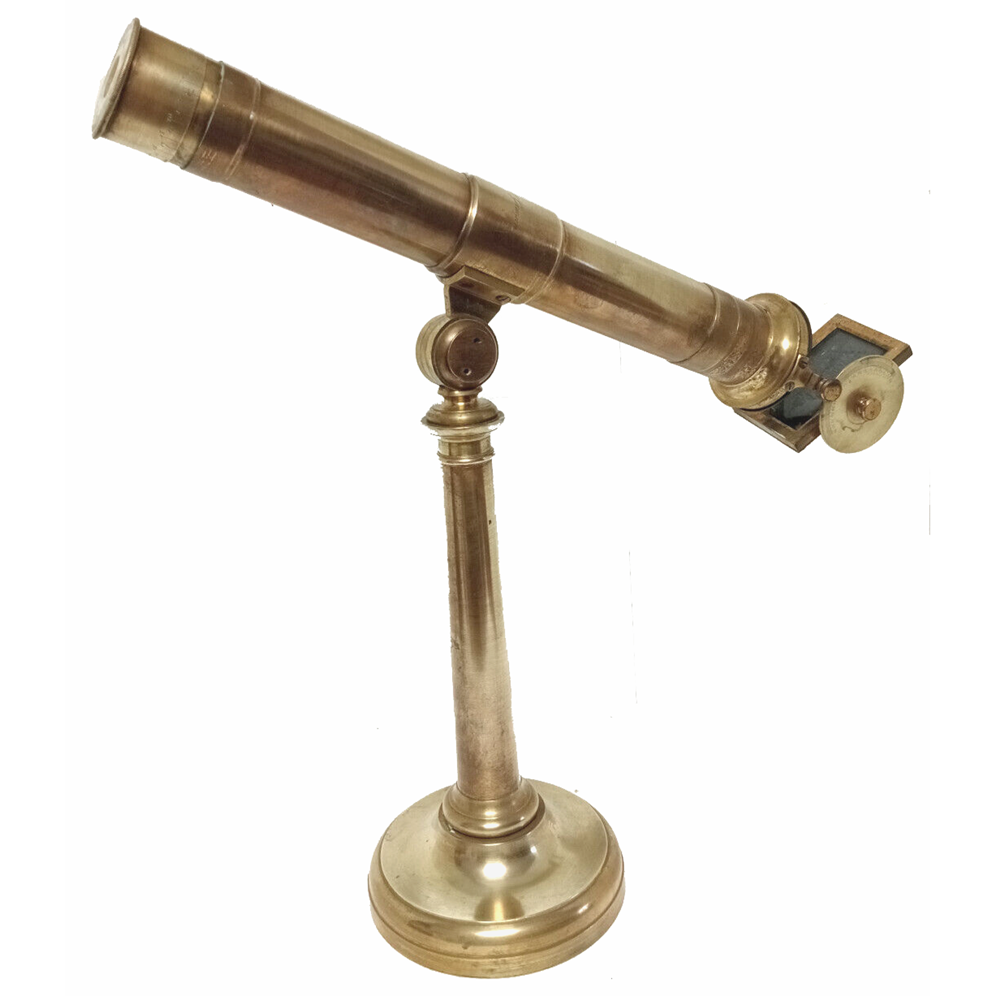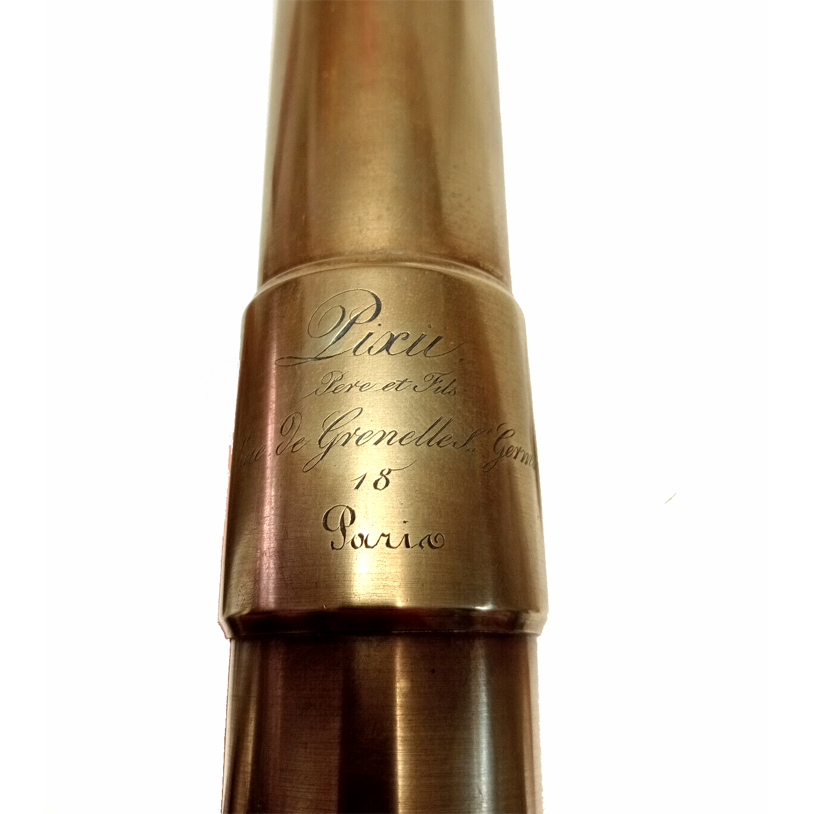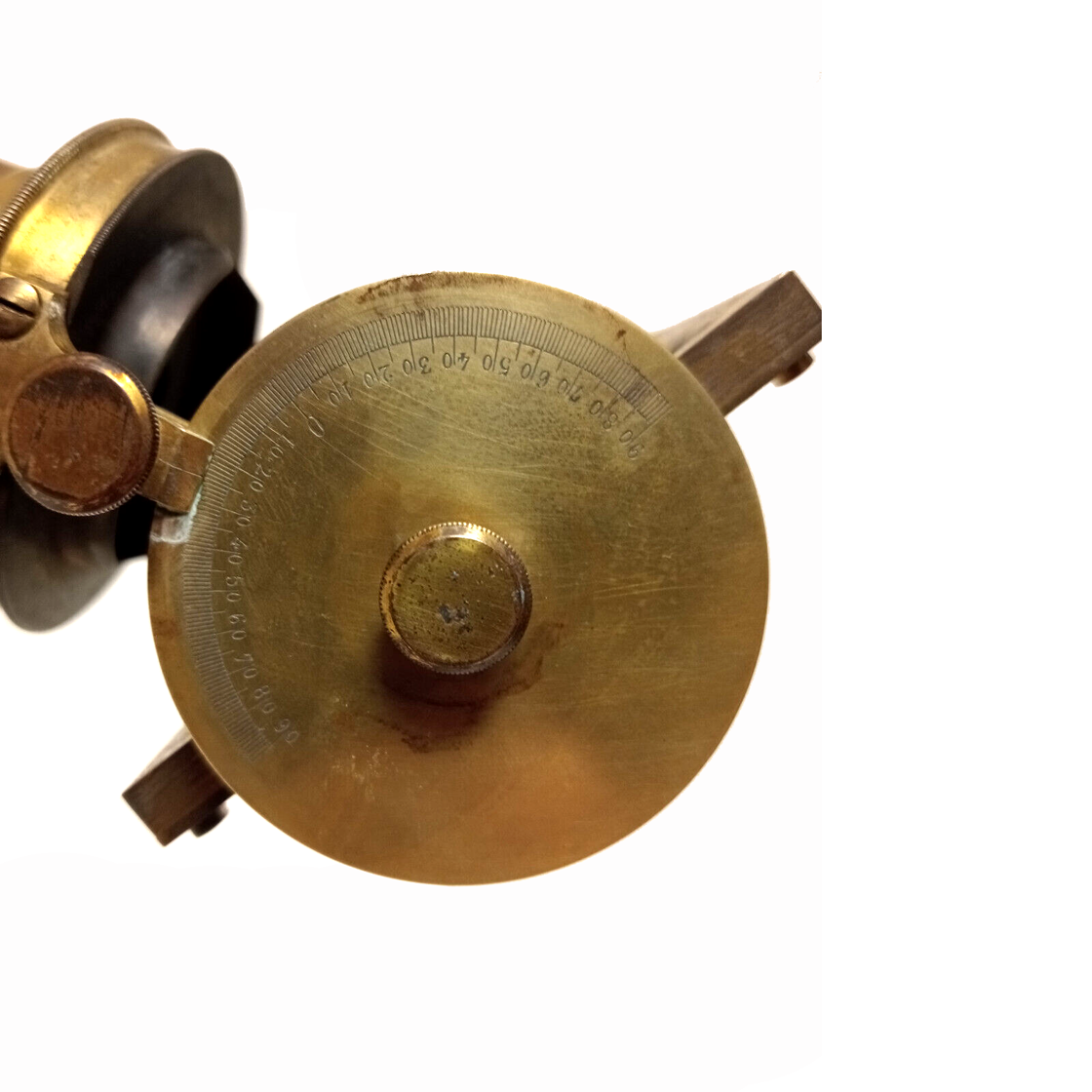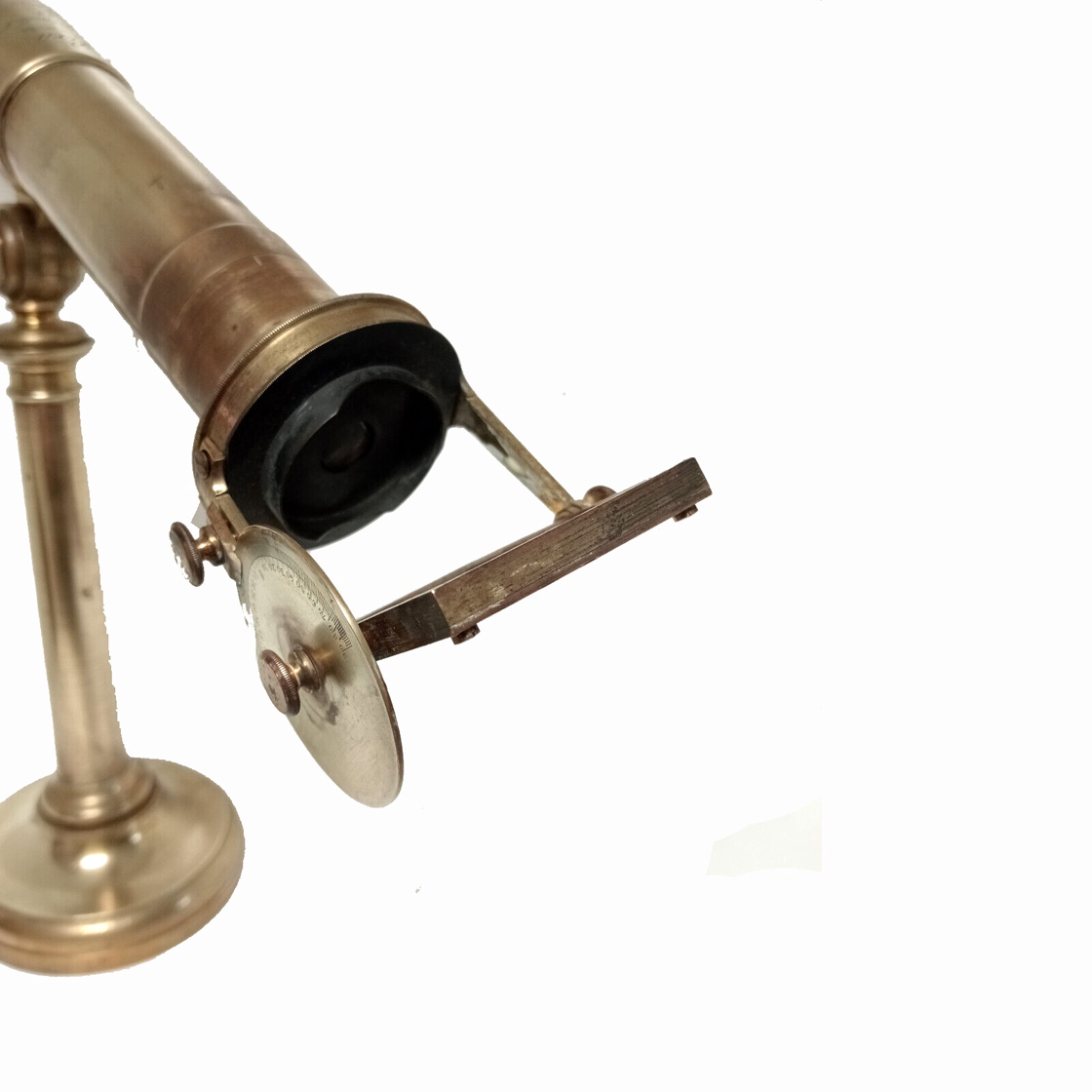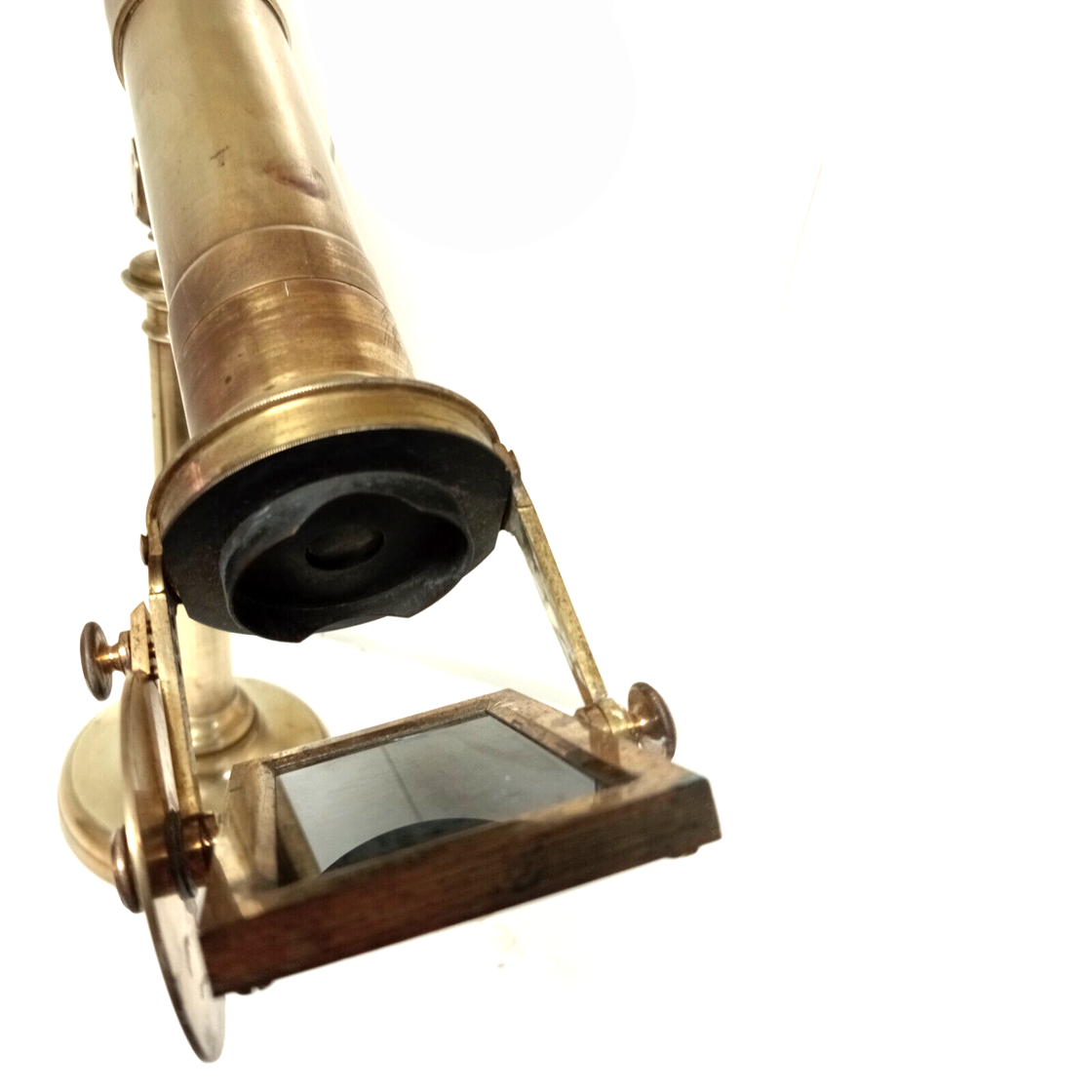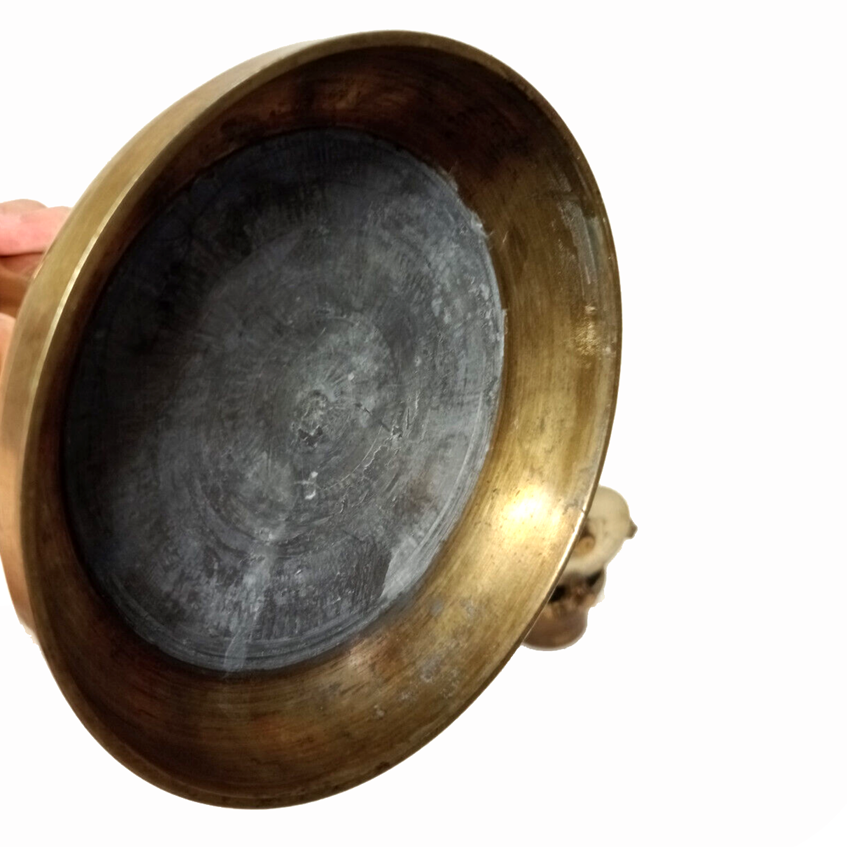Biot’s polariscope by Pixii and Son, ca. 1835
Stock Number: FG_25009
£800
Biot's polariscope is an optical instrument designed to demonstrate and investigate the phenomena of polarization, particularly the polarization of light through reflection. Developed by Jean-Baptiste Biot, this instrument aids in studying Malus's law, which explains how the intensity of polarized light changes as it passes through an analyzer. A typical Biot's polariscope consists of a light source, a polarizer (typically composed of a stack of glass plates), an analyzer (another polarizing element), and a mechanism for observing the light that is transmitted or reflected.
Dimensions
Height: ca. 45 cm, weight: 2540 gr.
Circa
Ca. 1835
Maker
Pixii and Son, Paris
Country of manufacture
France
Description
This is a rare early polarization instrument. The essential components for polarization, particularly the polarization prism named after William Nicol, had been developed by Edinburgh mineralogists William Nicol (1770-1851) and David Brewster (1781-1861) in the early 19th century. In 1834, the Englishman William Henry Fox Talbot (1800-1877) proposed combining Nicol’s prisms with a microscope to observe thin sections of rock. Interestingly, Nicol had suggested this concept a few years earlier. During the same year, Talbot noted remarkable color phenomena that appeared between the crossed Nicol prisms. However, since he was primarily focused on advancing photography, where he is regarded as a key pioneer alongside Louis Daguerre, he did not pursue further research on rocks.
It wasn’t until the end of the 19th century that the polarizing microscope became a standard tool in optical mineralogy, also known as petrography. The initial developments took place in Italy and Britain, but the field reached its peak primarily in France and Germany. This advancement was the result of collaborative efforts among specialists from the Collège de France, the École des Mines, and the Muséum national d’Histoire naturelle, along with skilled instrument builders and the support of Giovanni Battista Amici, the court astronomer of Florence, and later in Germany.
Nicolas Constant Pixii (1776-1861) and his son Antoine-Hippolyte Pixii (1808-1835) were located at 2, rue du Jardinet, Paris from 1818 to 1838, and later from 1838 to 1855 at 18, rue de Grenelle, Saint Germain, Paris.
Ask the Dealer
Dealer information
 Gilgamesh
Gilgamesh
Gilgamesh is a mythological hero from the ancient cultures of West Asia, who embarked on a journey in search of youth and eternal life. Fleaglass Gilgamesh is located in Israel. As an Emeritus Professor of archaeology, I have spent over four decades researching the material culture of the distant past, utilizing the microscope as a powerful research tool. For the past thirty years, I have collected microscopes from the first 300 years of this remarkable instrument's history and have studied the cultural context of their use.
What started as a passion has turned into an obsession, and I now cultivate a nearly unique collection of historical microscopes from West Asia. From time to time, I offer surplus or particularly interesting items from my collection for sale. I am happy to provide free advice to any interested collector. If you would like to receive photos, information, and bibliographic references, or if you wish to discuss the details of the items I have for sale, please feel free to reach out.




